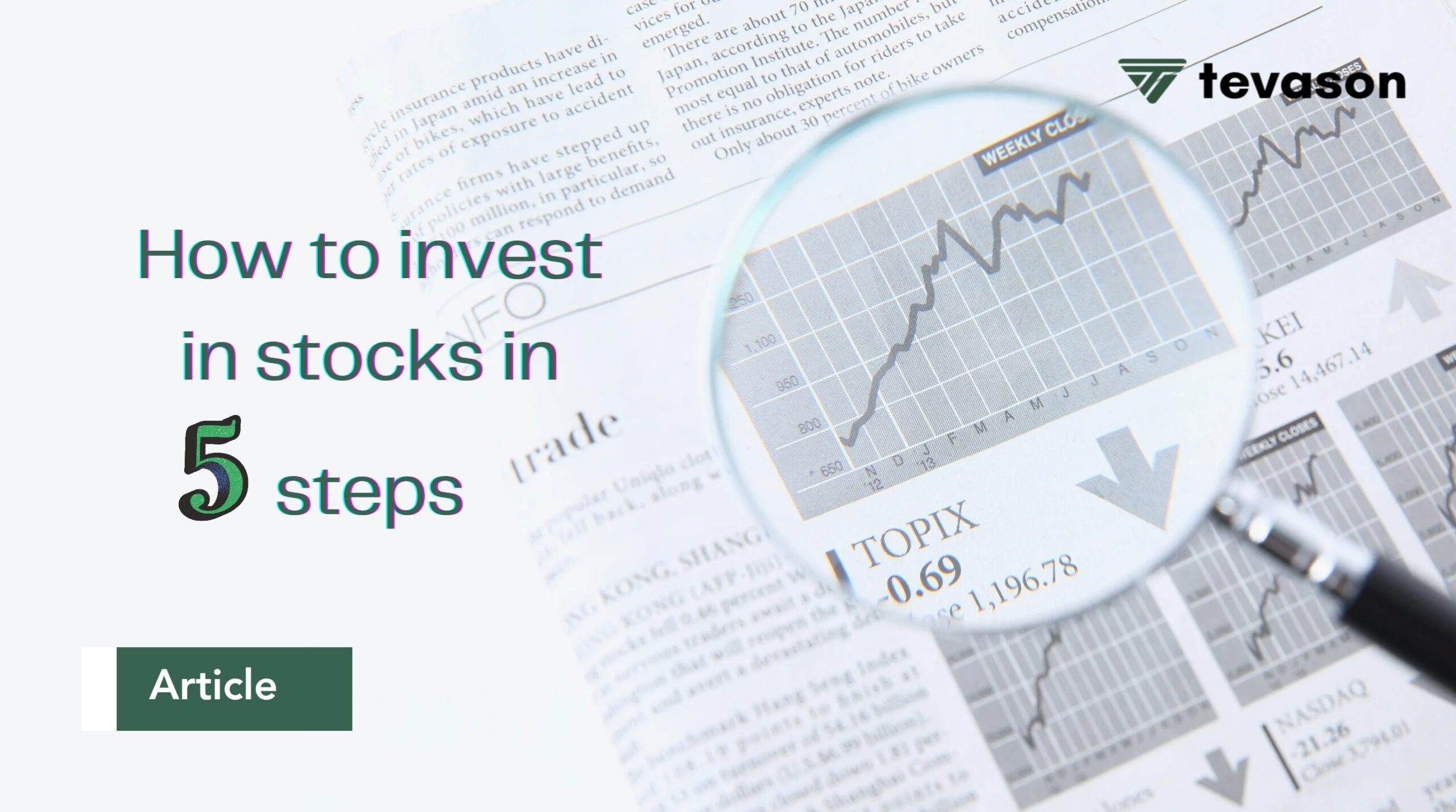Learn how to invest in stocks and research stock market investments.
When you invest in a stock, you’re essentially betting on the company’s future growth and success. That’s how you earn a return. For beginners, one of the simplest ways to start is by opening an online brokerage account and buying stocks through it. You don’t need a large sum of money to begin. In fact, many brokerages let you open an account with no minimum deposit. Even investing small amounts, like $10 or $20, can get you started.

How to invest in stocks in 5 steps
To invest in stocks, open an online brokerage account, add money to the account, and purchase stocks or stock-based funds from there. You can also invest in stocks through a robo-advisor or financial platforms like Tevason.
- Decide if you want to invest on your own or with help.
There are several ways to approach investing in stocks. Choose the option below that best describes how hands-on you’d like to be.
A. “I’d like to choose stocks and stock funds on my own.”
Keep reading. This article breaks down how to choose the right account for your needs and how to pick and manage particular investments.
B. “I want to be invested in stocks, but I don’t necessarily want to learn how to invest in them.”
You may be a good candidate for a robo-advisor, a service that invests your money for you for a small fee. Many of the major brokerage firms and some independent companies offer these services. We’ll cover investing through a robo-advisor in the next section.
- Choose a broker or robo-advisor
Once you know how you want to invest, you’re ready to choose your broker or robo-advisor.
A. You’re investing on your own
If you’re investing on your own, you’ll need to figure out what broker you want to open that account with.
You’ll want to evaluate brokers based on factors like costs, investment options, research tools, and customer service access. You might also consider opening a brokerage account with the same institution where you bank. It can make managing all your finances in one place much easier.
B. You’re investing through a robo-advisor
If you’re investing through a robo-advisor, you’ll have to figure out which one to work with. Similar to shopping for a broker, there are pros and cons to each. Some robo-advisors have very low fees, while others let you talk with a financial advisor if you need extra support or more personalized guidance.
- Pick a type of investment account
Whether you’re going solo or using a robo-advisor, you’ll need to choose the right type of investment account — like a Roth IRA for tax benefits or a standard brokerage account. Opening an account takes about 20 minutes and requires some personal info, like your Social Security number. It may take a few days to link your bank account, so you might not be able to invest right away. Remember, the account itself isn’t the investment — you’ll still need to fund it and buy assets.
- Set a budget for your stock market investment
New investors often have two questions in this step of the process:
How much money do I need to start investing in stocks?
The money you need to buy a stock depends on its share price — some cost a few dollars, others thousands. Fortunately, many brokerages offer fractional shares, so you can invest any dollar amount, even if it’s less than the full share price.
If you’re interested in mutual funds but have a small budget, consider exchange-traded funds (ETFs). Unlike mutual funds, which often require $1,000 or more, ETFs trade like stocks and can cost under $100 per share.
How much money should I invest in stocks?
How much to invest in stocks depends on your goals, risk tolerance, and timeline. A common rule of thumb is to invest only what you won’t need in the next 3–5 years. Start with any amount you’re comfortable with, even $100 or $500 —and grow from there. Consistency matters more than size when you’re building long-term wealth.
- Focus on investing for the long term
The stock market is one of the most reliable ways to build long-term wealth, averaging about 10% annual returns over time — though results vary year to year and stock to stock. For long-term investors, short-term ups and downs don’t matter much. Once you invest, the best move is often to stay patient and avoid constantly checking your portfolio.
The investing information provided on this page is for educational purposes only. Tevason, Inc. does not offer advisory or brokerage services, nor does it recommend or advise investors to buy or sell particular stocks, securities or other investments.

Leave a Reply